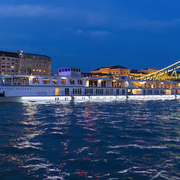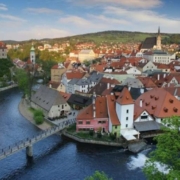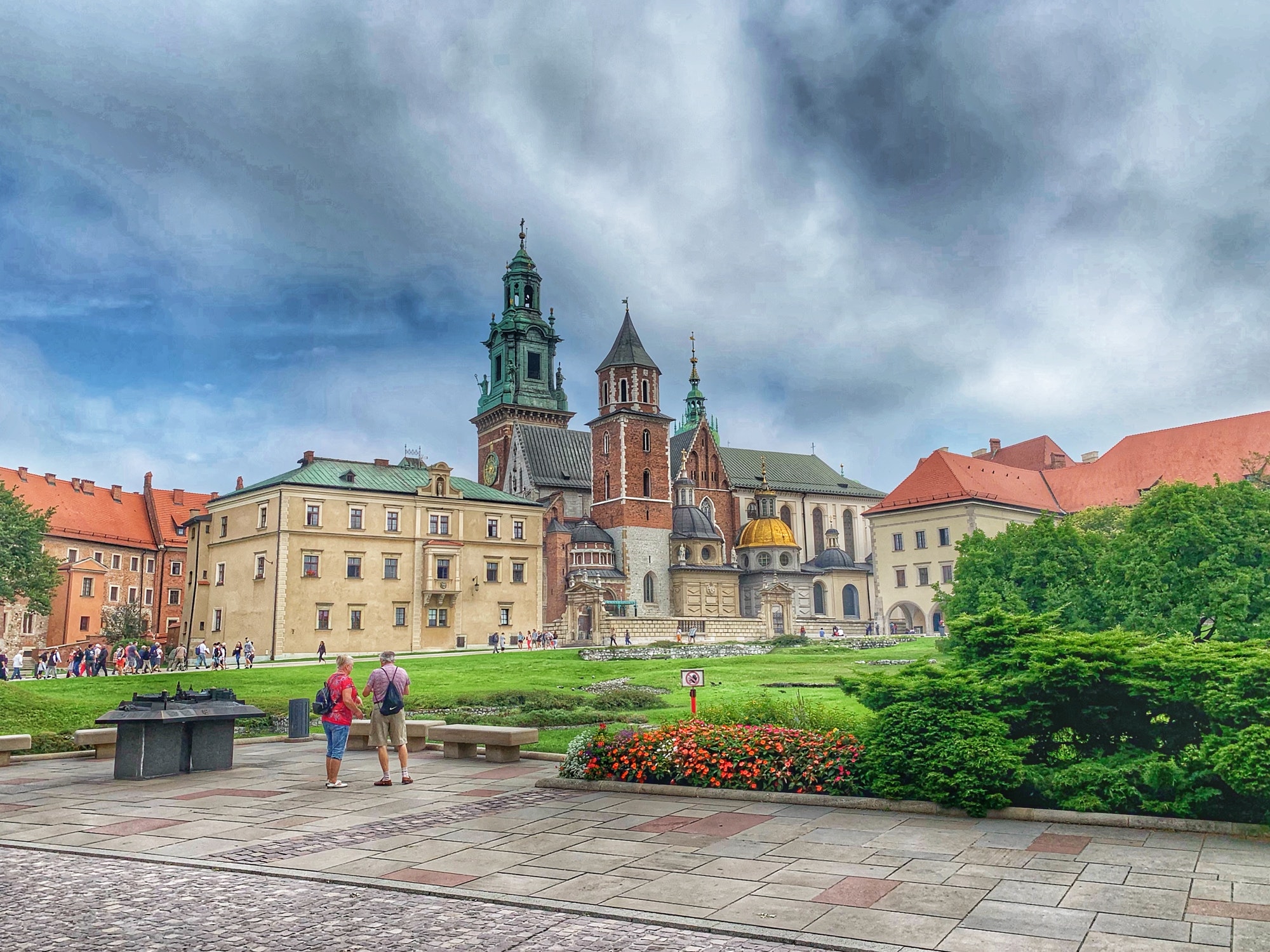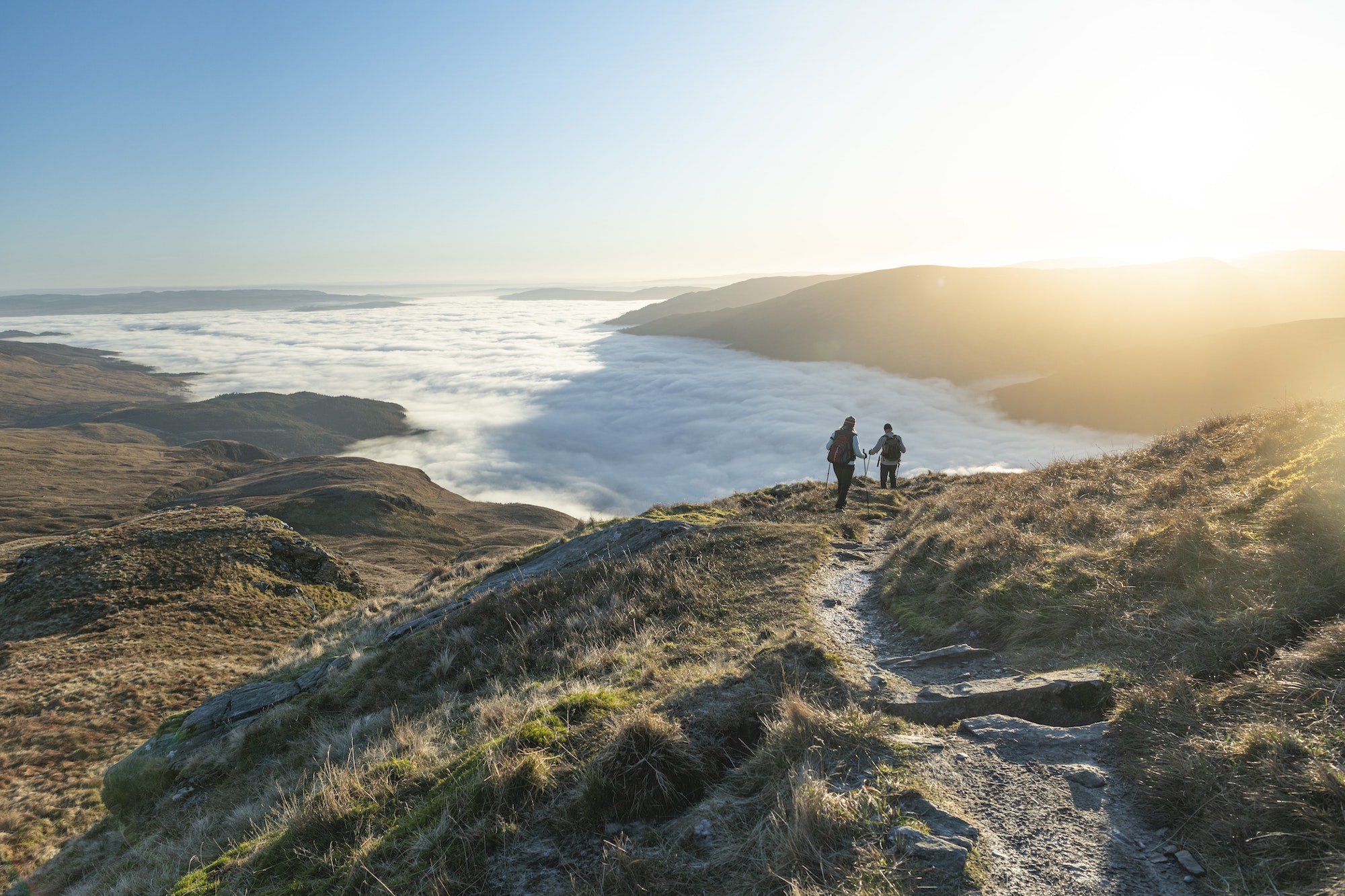Hiking Tours: From Krakow to Budapest
We knew we were in trouble at the first night’s wine and cheese gettogether in Krakow. That’s when several of our fellow foot soldiers on our Butterfield & Robinson walking tour reminisced about their treks in Nepal.
“Nepal?” I whispered hoarsely to David, my husband. “We’re doomed.” Trails that come with steep peaks, trekking gear, supplemental oxygen and Sherpas are not doable day trips for us. After all, we signed-on for mostly “moderate” terrain with a couple of opt-in-or-out challenging rambles on our seven-day journey from Krakow to Budapest.
Because we envisioned scenic city strolls, easy wooded slopes in Poland and Slovakia plus gentle hillside vineyards in Hungary, David and I “trained” by adding only leisurely weekend ambles with our dogs along Connecticut Avenue to our regular work-out routines.
What innocents, what idiots we were.
So that’s how I found myself gasping for breath as I struggled up what Butterfield & Robinson labeled a “hillock.” Hah. Pointing to the fairytale-like landscape of snow-capped mountains, rolling fields and green valleys that surrounded us, I reminded Mariana, one of our guides, that “hillocks” don’t have panoramic views. Butterfield & Robinson is a travel company that has arranged hiking, biking and other adventure trips for more than 40 years.
Although I asked David to walk with me on this our first day of real hiking after two city ambles, he bolted for the middle of the pack with barely a backward glance. I waved him on. Being last damaged his self-concept and after all, why waste energy talking since I sounded like a dying patient hooked up to a respirator.
Although the rest of our troop had long disappeared into the horizon, heading for lunch at a local farmhouse, Mariana, a U.S. citizen with Polish ancestry, kept up a merry chatter about life in Krakow while I huffed and puffed up my hillock.
As in a magical story, suddenly my knights in shining armor glinted in the summit sunlight—five, tipsy, scruffy, twentysomething Poles taking a break from their motor cross convoy of the ridgetops by hoisting a few Zywiec, the local brew. “Bribe them to give me a ride to lunch,” I screeched.
Unfortunately we had no money. Mariana strode to the quintet astride their WW II –looking bikes with sidecars, flashed them a gorgeous smile and whipped out bags of MilkyWays, Snickers and caramel-coated cashews. My would-be saviors munched on the treats as Mariana pointed to a pathetic figuring hobbling slowly uphill—me–and asked if they would deliver us to our rendezvous one-and-a-half miles away. “It’s all downhill. You can do it,” Tomasz, said, as he and the others roared off.
For nearly 45 more minutes we walked up and down lanes past cows, hayfields and storybook white cottages. Finally, exhausted, sweating and very hungry after a nearly 7-mile trek, I entered the yard to applause from the rest of my group who, finished with their kielbasas grilled on the outdoor fire, basked in the sun.
That was just the morning hike. In the afternoon David, I and Kathryn, an Australian suffering a bad cold, jumped onto the chairlift for a shortcut. Everybody else happily headed uphill for 1 1/2 hours more of fun. After all, Zakopane is a popular ski and hiking center in the Tatra Mountains, also known as the Polish Alps.
Although I craved only a shower and some sleep, David encouraged—OK, dragged– me to dinner. Butterfield & Robinson chose the Czarci Jar, or the Devil’s Gully, a log restaurant serving country specialties. B& R also hired local folk dancers and fiddlers for the Polish equivalent of a hoedown. Women wearing white peasant blouses, floral vests and flowing skirts and men attired in billowing white shirts and breeches danced to the gorale, upbeat Polish mountain music. When a handsome, smiling blonde lad approached me, I, alas, put my head down on the plank table between a steaming bowl of cabbage and a plate of bigos, or hunter’s stew, and pled fatigue. Dance? I could barely walk or stay awake.
Not my fellow travelers. After a wisniowka, a cherry vodka or two, our troop bloomed. Jack, an investment banker, and Carol, a graphic artist from Texas, twirled and whirled as did Jack, a CEO, and Jane, a schoolteacher, both from Georgia. So did Florence, a real estate mogul from Wyoming who walks miles every day and her marathon running twentysomething step-daughter Natasha, a Denver attorney and Learka, Florence’s niece and a Los Angeles lawyer.
Wayne, who sold his computer business in Bethel Park, PA, set off to see the world, clapped, toe tapped and eventually boogied. Kathryn, who found Nepal no trouble at all, glided across the dance floor with a local 10-year-old boy dining with his family. Her husband Nick, a retired Australian politician, stepped lively with a red-cheeked lady.
My husband, an attorney, danced too. The two Helens, businesswomen from Australia, swirled to the fiddle music with the dashing Poles as did Jennifer, a painter from Australia. Charmingly competitive, her husband Phillip, a physician, looped arms with one of the performers, then circled, stomped and spun her faster and faster until I thought they’d both disappear in a puff of smoke. Perhaps Phillip had downed a Zubrowka, also called bison vodka, because every bottle, to add some zip, contains a blade of grass reportedly urinated on by those formidable animals.
It was a fun evening and if I hadn’t felt like the walking dead, I might have fantasized about–er-danced- with that blonde Prince Charming. As it were, I left David eating pirogis (dumplings), got a taxi to the hotel and slept like the dead until morning when I awoke to every part of my body aching.
Each day at breakfast we received our marching orders. The trails ranged from seven to 13+ miles per day, broken up by lunch at a village café, a wine cave, a mountain hut or other scenic locale. Although often starting as a group, we soon thinned out as each of us found a suitable pace. When possible, one guide lapped our route in a van, handing out water, snacks and, for the weary, rides.
By the next afternoon, David, a daily gym-goer, hiked with the middle and sometimes the advanced group. I, of course, took up the rear. But this was a vacation, not a competition, I kept telling myself and going slower made it easier to savor the Tatras, a sylvan landscape of dense, cool woods and crystal creeks. For part of the seven-mile, mostly uphill, morning hike, our lead guide Agnieszka, or “Aggie” as she preferred to be called, accompanied me.
Aggie, an accomplished woman with a masters degree in European Studies and a Polish native, strode like an Olympic hurdler. Consequently, walking with me proved painful, like someone accustomed to high-speed DSL being forced to download War and Peace on dial-up. Nevertheless, Aggie tried not to look appalled when I stopped frequently on the mountain trails, gasping for air.
By now, David and I wised-up to the lingo. We realized that anything described as “challenging” especially when coupled with references to a “view” would test him and likely require me to spend a night or two in the forest to complete. To Butterfield & Robinson, like many soft adventure companies, “hike” is a forbidden four-letter word. The trip is always referred to as a “walk” and then each section is graded “easy,” “moderate” or “challenging.”
That’s good middle-of-the-road marketing, particularly to attract boomers such as David and me who want something of a workout with their scenery. We just had not anticipated this much. That afternoon we eschewed the six miles of “moderately challenging” trails “with some climbing up to a viewpoint” for massages followed by naps.
We ached, we groaned, but David and I progressed. On day five when faced with the high Tatra Mountains of Slovakia , David felt confident and I was determined, if a bit worried. The trip notes dubbed this “our potentially most challenging day’s hike.” While filling our backpacks with granola bars and trail mix, Jane admitted some trepidation but the others looked forward to a hard day’s trek.
Mariana got the booby prize again—me. The before lunch task: hike five miles uphill starting near the Karpatia Hotel in the town of Tatranská Lomnica to Zamkouskeho Chata, a mountainside café. At first I kept slipping on the switchback trail covered with irregularly shaped, pointy stones. Once I gained my footing, the rocky forest paths and rushing streams inspired me even though I was breathing hard. Mariana joked and jollied me along.
Although I reached the lunch hut last, I felt good about slugging through even if, for motivation, I had to sing a few choruses of “Climb Every Mountain” and pretend to be chased by Nazis. Happy to sit, I ate my hearty lentils and goulash, and tried hard not to notice Mariana and Aggie talking in rapid Polish while staring at me.
Ahead of us stretched two miles of even steeper terrain that led to the summit where we boarded the cable car for the ride back down to town. The problem: the cable car stopped operating in about an hour. If I missed it, I spent the night trapped atop the mountain—no food, no water, no shelter.
Convinced I couldn’t possibly handle the task, Aggie wanted me to turn around and walk down. But sweet Mariana, knowing how crushed I would feel, argued for my abilities. Mariana told me she thought I could do it. First I got mad at Aggie’s negative assessment of my hiking abilities—however accurate– and then I got motivated.
For the next two miles I chugged like the Little Engine that Could, that children’s story about the train that no one believed could crest the mountain. After a few minutes, the trail brought us above the tree line where we paced by patches of snow. Because the rocky path was narrower and more curving than the before lunch trail, for the first 15 minutes I didn’t notice the view.
I kept my eyes riveted on my feet to prevent tripping and flying off the cliff. To my surprise, I discovered that moving quickly resulted in better balance. After awhile, I could hike with my head up, admiring the panoramic view of steep, snow-covered peaks glistening in the sun. Soon, I caught up with Florence and the local guide. Hooray, I wasn’t last even if my breathing sounded like a truck running with a broken carburetor. Proudly, I stepped onto the gondola with 10 minutes to spare. Exhausted, but happy at meeting the challenge, I savored the long ride down over the rolling valleys edged with steep mountains.
What gave me the gasps again was Spis Castle in eastern Slovakia, a fortress we hiked on the way to Hungary.
Picking my way up the steep hill, even stopping often to photograph the yellow wildflowers ( a good excuse for gulping air), I knew why no marauders had ever breached the walls in more than a thousand years: they all died of exhaustion from the climb up.
Even with crumbling partitions and destroyed ceilings, enough of the centuries-old fortification remained—ramparts, archways, interior courtyards and towers—to convey a sense of the castle’s former grandeur. From the summit, the valley bloomed quilt-like into neat squares of green oats patched to fields of yellow rapeseed. Groves of peach and cherry trees as well as rows of huckleberry bushes and grapevines laced the rolling hills.
I even looked forward to the next days’ walks through Tokaj, Hungary’s wine region. After conquering mountains, how strenuous could a stroll through a vineyard be? It was not difficult, just very, very hot, especially after the shaded mountain paths. By our journey’s end, despite aching calves and calluses, David and I rated this trip as one of our best. The varying landscapes coupled with the cultural components created a good balance.
The urban walks enabled us to get to know Krakow, whose Old Jewish quarter, parts of which appeared in “Schindlers’ List,” evoked that long lost pre-WW II era. The visit to the war’s Auschwitz and Birkenau concentration camps as well as our interview Butterfield & Robinson arranged with a survivor was important, sad, inspirational and something we will never forget.
David and I stepped our way into the daunting woods, and just like in a fairy tale, won the challenge. We can’t wait to do it again.
Sidebar:
Nazi killing camps area living testimony. Somehow, we always imagined it to be raining at Auschwitz and Birkenau, the infamous killing complex of W.W. II. But the sun shone when we toured, led by guide Dorita Nicz, whose two, non-Jewish uncles were sent to Auschwitz for giving water to an escaped prisoner.
One of the brothers died and the other survived, but not his spirit. “I was a little girl, but I remember he never smiled, “said Ms. Nicz . He talked only to my grandmother and he kept always a piece of bread in his pocket.”
As Ms. Nicz led us through the camps, she recounted the systematic torture and murder. Although Auschwitz stands as a synonym of man’s inhumanity, Birkenau, built with four gas chambers—because the Jews and other prisoners were arriving faster than the Nazis could liquidate them– horrified us more.
The Nazis set fire to Birkenau as the Allies approached, a wooden barracks remains as well each unit’s brick chimney. We walked for nearly three-quarters of a mile, passing rows upon rows of chimneys. Each one represented temporary housing for hundreds of prisoners soon to be gassed.
Another B& R surprise: an interview with 86-year-old Kazimierz Smolen, a Polish partisan and survivor of five years’ imprisonment at Auschwitz, and also the former director of the Auschwitz Museum. In Polish, as our tour leader translated, he told us of life at Auschwitz.
For three months the Nazi Party’s SS (for Schutzstaffel) police unit kept him and others standing in a totally dark cell; many suffered strokes. Each morning and evening the SS conducted roll call outside. Weak, starving and barefoot, Mr. Smolen and the other prisoners often were made to do the bear dance by turning around in circles with their arms raised above their heads, sometimes for three or more hours. When inmates stopped or lowered their arms, the SS beat or shot them.
Food consisted of a quart of herbal tea in the morning and half a pound of bread in the evening and sometimes soup. Mr. Smolen was one of the 4,000 prisoners forced to build Birkenau, working from 5 a.m. until dark in muddy fields and marshes. Each day 10-15 men died of exhaustion.
When the Nazis learned Mr. Smolen could type, they gave him the indoor job of registering those about to be exterminated.
By 1942, from 3,000 to 5,000 Jews arrived daily at the camp. “We worked all day and night, but we couldn’t give receipts for so many people, “ said Mr. Smolen .” So we only gave out numbers for about 500. The rest were soon burned in the crematorium.”
By 1944, 10,000 people arrived each day, but only about 4,500 could be burned daily, so bodies were stacked in piles. “You cannot imagine the smell,” noted Mr. Smolen. “When a transport arrived, after the men, women and children were separated by the SS men, we would hear people crying out names of a sister, a son. And then hours later all was silent again,” he said.
I asked Mr. Smolen what helped him survive, how did he get through each, horrible day. He looked at me, his blue eyes wide, and sighed heavily. “Friends,” he said. “Each day we found new friends to help.”
And that’s when I cried.
Fact Files
This year Butterfield & Robinson reverses the trip, starting with a pick-up in Budapest and ending after a walking tour of Krakow. Auschwitz-Birkenau is not part of the regular trip, although B&R can help arrange a visit. The 8-day/7-night trip, rated “moderate to challenging” departs August 10-17 and September 14-21 and the cost is $5495 per person. 800-678-1147. www.butterfield.com
Accommodations
The 77-room Andrássy Hotel in Budapest is a Bauhaus-style building on broad Andrassy Avenue in an area of embassies and residences. The hotel offers good service and rooms come with breakfast. www.slh.com/andrassy
800-525-4800
Hotel Copernicus is in the heart of the old Krakow near the castle. The entrance to the 29-room hotel is through a medieval portal. Ask for rooms facing the street. www.relaischateaux.com 800-735-2478


 Great Family Vacations
Great Family Vacations Dentist's Money Digest
Dentist's Money Digest Frommers.com
Frommers.com Physician's Money Digest
Physician's Money Digest Great Family Vacations
Great Family Vacations
 Physician's Travel & Meeting Guide
Physician's Travel & Meeting Guide BellaOnline.com
BellaOnline.com